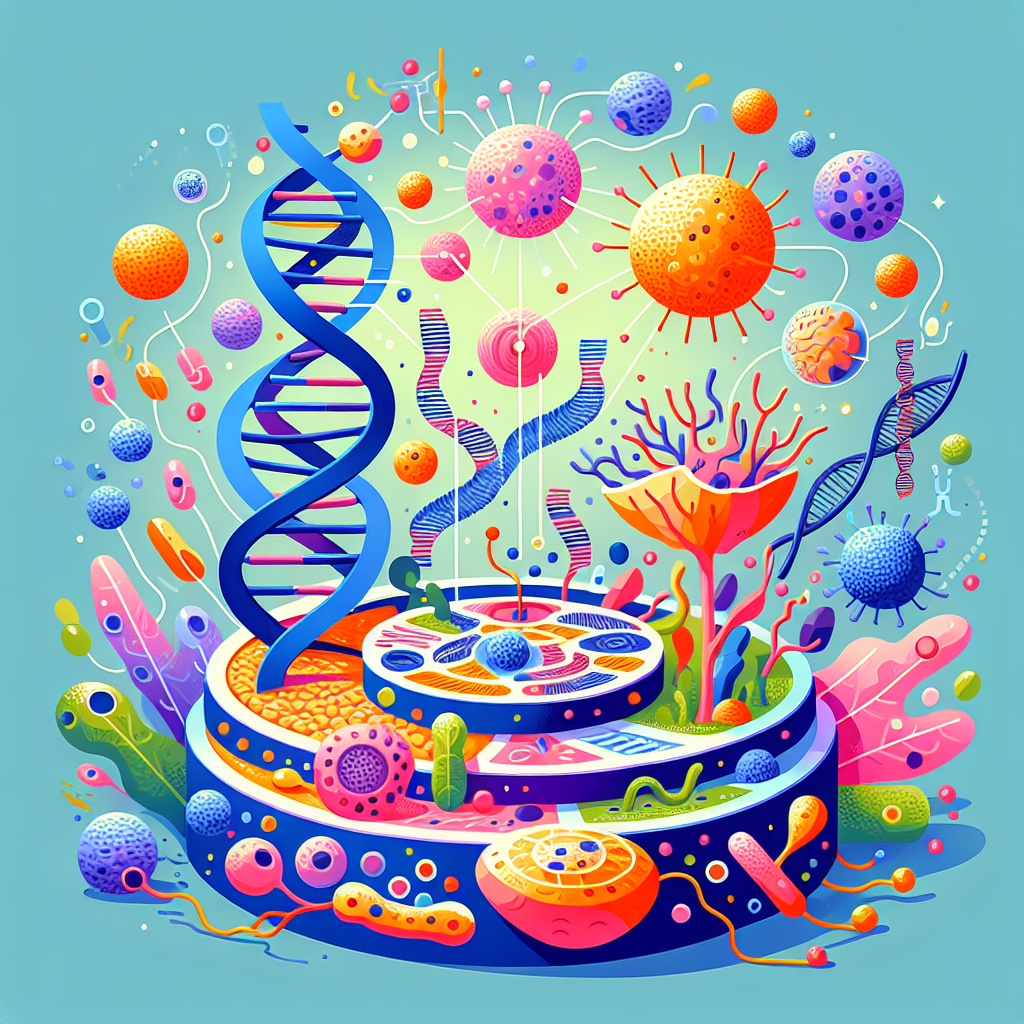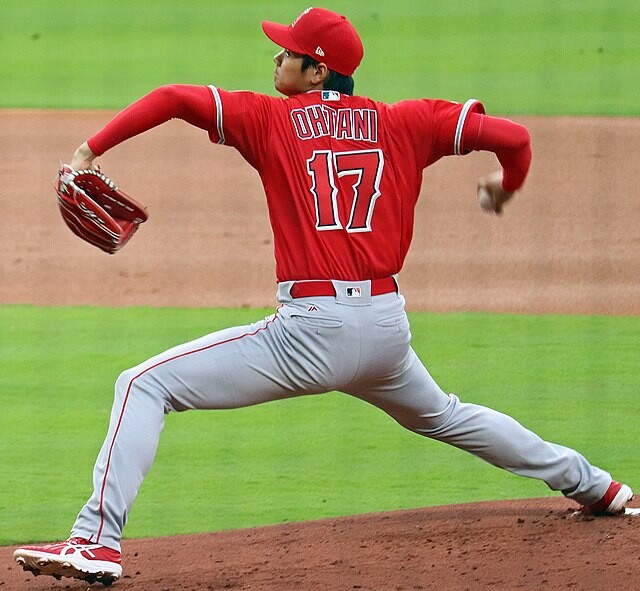The 2024 Nobel Prize in Physiology or Medicine has been awarded to American scientists Victor Ambros and Gary Ruvkun for their groundbreaking work on microRNA. MicroRNAs play a crucial role in controlling gene expression within organisms, including humans, and are essential for the development and functioning of different tissues in the body. This discovery sheds light on how complex life forms evolved on Earth.
Every cell in the human body contains the same genetic information, yet they exhibit diverse forms and functions. This diversity is achieved through gene expression, where microRNAs regulate how genes are expressed differently in various tissues. The research by Ambros and Ruvkun has unveiled a new principle of gene regulation that is vital for multicellular organisms, such as humans.
MicroRNAs are crucial for enabling the evolution of complex life forms by controlling gene expression. Abnormal regulation by microRNAs can lead to conditions like cancer, congenital hearing loss, and bone disorders. The scientists conducted their research on the nematode worm, C. elegans, and identified microRNAs as essential for the worm’s development, highlighting the significance of these tiny genetic elements.
The work of Ambros and Ruvkun has paved the way for innovative research into therapies for various diseases, such as epilepsy, by understanding how microRNAs regulate gene expression. Their findings have also provided insights into the intricate mechanisms that govern cellular activities. The Nobel Prize winners’ contributions have expanded our understanding of gene regulation and its impact on human health.
This prestigious award adds Ambros and Ruvkun to the list of esteemed Nobel laureates in the field of medicine and physiology. Their research on microRNAs joins a legacy of scientific discoveries that have revolutionized our understanding of human biology and paved the way for significant advancements in medical research and treatment.
Original news source: Nobel Prize goes to microRNA researchers (BBC)
🎧 Listen:
Slow
Normal
Fast
📖 Vocabulary:
| 1 | groundbreaking | Introducing new and innovative ideas or methods |
| 2 | microRNA | Small RNA molecules that regulate gene expression |
| 3 | gene expression | The process by which information from a gene is used to create a functional product |
| 4 | organisms | Living beings, including animals, plants, and microorganisms |
| 5 | tissues | Groups of cells in an organism that have a similar structure and function |
| 6 | evolved | Developed gradually over time |
| 7 | diverse | Showing a great deal of variety or difference |
| 8 | regulation | The act of controlling or maintaining a process |
| 9 | congenital | Present from birth, often referring to medical conditions |
| 10 | nematode | A type of worm used in scientific research |
| 11 | therapies | Treatments intended to relieve or heal a disorder |
| 12 | intricate | Very detailed and complex |
| 13 | laureates | Individuals who have been awarded a prestigious prize |
| 14 | legacy | Something handed down from the past, such as achievements or traditions |
| 15 | advancements | Progress or improvements in a particular field |
Group or Classroom Activities
Warm-up Activities:
– News Summary
Instructions: Ask students to work in pairs and summarize the main points of the article in their own words. Encourage them to focus on the key information about the Nobel Prize winners, their research on microRNA, and the significance of their findings. After a few minutes, have pairs share their summaries with the class.
– Opinion Spectrum
Instructions: Divide the class into two groups: one group representing advocates for genetic research and the other group representing advocates against genetic research. Ask students to discuss their opinions on the importance of studying microRNAs and genetic regulation. Then, have each student place themselves on a spectrum from strongly agree to strongly disagree based on their personal views. Encourage respectful debate and exchange of ideas.
– Vocabulary Pictionary
Instructions: Write down key vocabulary words from the article on separate pieces of paper and put them in a bag. One student from each team will pick a word from the bag and without saying anything, they must draw the word on the board for their team to guess. Set a time limit for each round and award points for correct guesses. This activity will help students reinforce their understanding of the article’s vocabulary.
– Keyword Hangman
Instructions: Choose important keywords from the article and write them as dashes on the board, like in a game of Hangman. Divide the class into two teams and have them take turns guessing letters to uncover the keywords. For each incorrect guess, erase a part of a stick figure on the board. The teams must work together to solve the keywords before the stick figure is completed. This activity will help students recall and spell key terms from the article.
– Sketch It
Instructions: In pairs, ask students to choose a specific part of the article, such as the importance of microRNAs in gene regulation or the impact of Ambros and Ruvkun’s research. Then, have one student sketch a visual representation of that concept while the other student explains it. Encourage creativity and clarity in their drawings. After a few minutes, have pairs present their sketches to the class and explain their chosen topic.
🤔 Comprehension Questions:
1. How do microRNAs play a crucial role in controlling gene expression within organisms?
2. What did the research by Ambros and Ruvkun unveil about gene regulation in multicellular organisms?
3. How can abnormal regulation by microRNAs lead to conditions like cancer, congenital hearing loss, and bone disorders?
4. What organism did the scientists conduct their research on to identify microRNAs as essential for development?
5. How has the work of Ambros and Ruvkun paved the way for innovative research into therapies for diseases like epilepsy?
6. In what way have the findings of Ambros and Ruvkun provided insights into the mechanisms governing cellular activities?
7. How does the awarding of the Nobel Prize to Ambros and Ruvkun contribute to the legacy of scientific discoveries in the field of medicine and physiology?
8. How have the contributions of Ambros and Ruvkun expanded our understanding of gene regulation and its impact on human health?
Go to answers ⇩
🎧✍️ Listen and Fill in the Gaps:
The 2024 Nobel Prize in Physiology or Medicine has been awarded to (1)______ scientists Victor Ambros and Gary Ruvkun for their groundbreaking work on microRNA. MicroRNAs play a crucial role in controlling gene expression within organisms, including humans, and are essential for the development and functioning of different tissues in the body. This discovery (2)______ light on how complex life (3)______ evolved on Earth.
Every cell in the human body (4)______ the same genetic information, yet they exhibit diverse forms and functions. This diversity is achieved through gene expression, where microRNAs (5)______ how genes are expressed differently in various tissues. The research by Ambros and Ruvkun has unveiled a new principle of gene regulation that is vital for (6)______ organisms, such as humans.
(7)______ are crucial for (8)______ the evolution of complex life forms by controlling gene expression. Abnormal regulation by microRNAs can lead to conditions like cancer, congenital hearing loss, and bone (9)______. The scientists (10)______ their research on the nematode worm, C. elegans, and (11)______ microRNAs as essential for the worm’s development, highlighting the significance of these tiny genetic elements.
The work of Ambros and Ruvkun has paved the way for innovative research into therapies for various diseases, such as epilepsy, by understanding how microRNAs regulate gene expression. Their findings have also provided (12)______ into the intricate mechanisms that (13)______ cellular (14)______. The Nobel Prize winners’ contributions have expanded our understanding of gene regulation and its impact on human (15)______.
This prestigious award adds Ambros and Ruvkun to the list of (16)______ Nobel laureates in the field of medicine and physiology. Their research on microRNAs joins a legacy of scientific discoveries that have revolutionized our understanding of human biology and paved the way for significant advancements in medical research and treatment.
Go to answers ⇩
💬 Discussion Questions:
Students can ask a partner these questions, or discuss them as a group.
1. What is the significance of microRNAs in controlling gene expression within organisms?
2. How do you think the discovery of microRNAs sheds light on the evolution of complex life forms on Earth?
3. Do you believe that understanding how microRNAs regulate gene expression can lead to effective therapies for diseases like epilepsy? Why or why not?
4. How would you feel if you discovered that abnormal regulation by microRNAs in your body could lead to a serious health condition?
5. What do you think are the ethical implications of using microRNA research for medical advancements?
6. Do you think the research by Ambros and Ruvkun will have a lasting impact on the field of medicine and physiology? Why or why not?
7. How do you think the discovery of microRNAs affecting gene expression in the nematode worm, C. elegans, can be applied to understanding human biology?
8. Why do you think it is important to study gene regulation and its impact on human health?
9. How do you think the work of Ambros and Ruvkun will influence future scientific research in genetics and molecular biology?
10. Do you believe that microRNAs could hold the key to unlocking treatments for currently incurable diseases? Why or why not?
11. What are your thoughts on the role of microRNAs in the development and functioning of different tissues in the human body?
12. How important do you think it is for scientific discoveries like this to be recognized with prestigious awards like the Nobel Prize?
13. Do you think the general public is aware of the significance of microRNAs in gene regulation and human health? Why or why not?
14. How might the understanding of microRNAs impact the future of personalized medicine and treatment options?
15. What do you think are the potential challenges in further researching and utilizing microRNAs for medical advancements?
Individual Activities
📖💭 Vocabulary Meanings:
Match each word to its meaning.
Words:
1. groundbreaking
2. microRNA
3. gene expression
4. organisms
5. tissues
6. evolved
7. diverse
8. regulation
9. congenital
10. nematode
11. therapies
12. intricate
13. laureates
14. legacy
15. advancements
Meanings:
(A) Present from birth, often referring to medical conditions
(B) Developed gradually over time
(C) Small RNA molecules that regulate gene expression
(D) A type of worm used in scientific research
(E) The process by which information from a gene is used to create a functional product
(F) Something handed down from the past, such as achievements or traditions
(G) The act of controlling or maintaining a process
(H) Introducing new and innovative ideas or methods
(I) Groups of cells in an organism that have a similar structure and function
(J) Very detailed and complex
(K) Progress or improvements in a particular field
(L) Treatments intended to relieve or heal a disorder
(M) Showing a great deal of variety or difference
(N) Individuals who have been awarded a prestigious prize
(O) Living beings, including animals, plants, and microorganisms
Go to answers ⇩
🔡 Multiple Choice Questions:
1. What did Victor Ambros and Gary Ruvkun win the 2024 Nobel Prize in Physiology or Medicine for?
(a) Their work on microRNA
(b) Discovering a new planet
(c) Inventing a new vaccine
(d) Studying the effects of climate change
2. What role do microRNAs play in organisms?
(a) Producing energy
(b) Regulating body temperature
(c) Enhancing muscle growth
(d) Controlling gene expression
3. How do microRNAs contribute to the diversity of cells in the human body?
(a) By controlling blood flow
(b) By regulating gene expression
(c) By influencing brain activity
(d) By determining eye color
4. What did Ambros and Ruvkun discover about gene regulation through their research?
(a) A way to time travel
(b) The secret to eternal youth
(c) A new principle of gene regulation
(d) The key to winning the lottery
5. Which organism did the scientists study to identify the importance of microRNAs?
(a) African elephant
(b) Arctic fox
(c) Nematode worm, C. elegans
(d) Amazonian tree frog
6. What can abnormal regulation by microRNAs lead to?
(a) Enhanced athletic performance
(b) Improved memory
(c) Faster healing of wounds
(d) Conditions like cancer, congenital hearing loss, and bone disorders
7. How have Ambros and Ruvkun’s findings impacted medical research?
(a) By inventing a time machine
(b) By providing insights into gene regulation
(c) By discovering a cure for all diseases
(d) By creating a new type of surgery
8. What legacy do Ambros and Ruvkun’s research on microRNAs contribute to?
(a) A legacy of scientific discoveries in human biology
(b) A legacy of culinary innovations
(c) A legacy of space exploration
(d) A legacy of fashion trends
Go to answers ⇩
🕵️ True or False Questions:
1. The research by Ambros and Ruvkun sheds light on the evolution of complex life forms on Earth.
2. MicroRNAs regulate gene expression similarly in various tissues, leading to the uniform forms and functions of cells in the human body.
3. American scientists Victor Ambros and Gary Ruvkun were awarded the 2024 Nobel Prize in Physiology or Medicine for their work on microRNA.
4. The work of Ambros and Ruvkun has opened up new avenues for research into therapies for diseases like epilepsy by understanding how microRNAs regulate gene expression.
5. The Nobel Prize awarded to Ambros and Ruvkun excludes them from the prestigious list of Nobel laureates in the field of medicine and physiology, disregarding their contributions to advancing our understanding of gene regulation and human health.
6. MicroRNAs are insignificant for controlling gene expression in organisms, including humans, and are optional for the development and functioning of different tissues in the body.
7. Ambros and Ruvkun conducted their research on the nematode worm, C. elegans, and identified microRNAs as insignificant for the worm’s development.
8. Abnormal regulation by microRNAs can result in conditions such as cancer, congenital hearing loss, and bone disorders.
Go to answers ⇩
📝 Write a Summary:
Write a summary of this news article in two sentences.
Check your writing now with the best free AI for English writing!
Writing Questions:
Answer the following questions. Write as much as you can for each answer.
Check your answers with our free English writing assistant!
1. What role do microRNAs play in controlling gene expression within organisms, including humans?
2. How did the research by Victor Ambros and Gary Ruvkun shed light on the evolution of complex life forms on Earth?
3. What are some of the conditions that can result from abnormal regulation by microRNAs, according to the article?
4. How did Ambros and Ruvkun’s research on the nematode worm, C. elegans, contribute to our understanding of microRNAs?
5. In what ways has the work of Ambros and Ruvkun paved the way for innovative research into therapies for various diseases, such as epilepsy?
✅ Answers
🤔✅ Comprehension Question Answers:
1. How do microRNAs play a crucial role in controlling gene expression within organisms?
MicroRNAs regulate how genes are expressed differently in various tissues, enabling diverse forms and functions within the same genetic information present in every cell of an organism.
2. What did the research by Ambros and Ruvkun unveil about gene regulation in multicellular organisms?
The research unveiled a new principle of gene regulation that is vital for multicellular organisms, such as humans, showing how microRNAs are essential for controlling gene expression.
3. How can abnormal regulation by microRNAs lead to conditions like cancer, congenital hearing loss, and bone disorders?
Abnormal regulation by microRNAs can disrupt gene expression patterns, leading to conditions like cancer, congenital hearing loss, and bone disorders due to the crucial role microRNAs play in regulating gene expression.
4. What organism did the scientists conduct their research on to identify microRNAs as essential for development?
The scientists conducted their research on the nematode worm, C. elegans, to identify microRNAs as essential for the worm’s development.
5. How has the work of Ambros and Ruvkun paved the way for innovative research into therapies for diseases like epilepsy?
By understanding how microRNAs regulate gene expression, the work of Ambros and Ruvkun has paved the way for innovative research into therapies for diseases like epilepsy.
6. In what way have the findings of Ambros and Ruvkun provided insights into the mechanisms governing cellular activities?
The findings have provided insights into the intricate mechanisms that govern cellular activities by revealing the role of microRNAs in gene regulation within organisms.
7. How does the awarding of the Nobel Prize to Ambros and Ruvkun contribute to the legacy of scientific discoveries in the field of medicine and physiology?
The awarding of the Nobel Prize to Ambros and Ruvkun adds them to the list of esteemed Nobel laureates and recognizes their groundbreaking work on microRNAs, which has expanded our understanding of gene regulation and its impact on human health.
8. How have the contributions of Ambros and Ruvkun expanded our understanding of gene regulation and its impact on human health?
The contributions of Ambros and Ruvkun have expanded our understanding of gene regulation by showing the vital role microRNAs play in controlling gene expression, shedding light on how abnormal regulation can lead to various health conditions like cancer, congenital hearing loss, and bone disorders.
Go back to questions ⇧
🎧✍️✅ Listen and Fill in the Gaps Answers:
(1) American
(2) sheds
(3) forms
(4) contains
(5) regulate
(6) multicellular
(7) MicroRNAs
(8) enabling
(9) disorders
(10) conducted
(11) identified
(12) insights
(13) govern
(14) activities
(15) health
(16) esteemed
Go back to questions ⇧
📖💭✅ Vocabulary Meanings Answers:
1. groundbreaking
Answer: (H) Introducing new and innovative ideas or methods
2. microRNA
Answer: (C) Small RNA molecules that regulate gene expression
3. gene expression
Answer: (E) The process by which information from a gene is used to create a functional product
4. organisms
Answer: (O) Living beings, including animals, plants, and microorganisms
5. tissues
Answer: (I) Groups of cells in an organism that have a similar structure and function
6. evolved
Answer: (B) Developed gradually over time
7. diverse
Answer: (M) Showing a great deal of variety or difference
8. regulation
Answer: (G) The act of controlling or maintaining a process
9. congenital
Answer: (A) Present from birth, often referring to medical conditions
10. nematode
Answer: (D) A type of worm used in scientific research
11. therapies
Answer: (L) Treatments intended to relieve or heal a disorder
12. intricate
Answer: (J) Very detailed and complex
13. laureates
Answer: (N) Individuals who have been awarded a prestigious prize
14. legacy
Answer: (F) Something handed down from the past, such as achievements or traditions
15. advancements
Answer: (K) Progress or improvements in a particular field
Go back to questions ⇧
🔡✅ Multiple Choice Answers:
1. What did Victor Ambros and Gary Ruvkun win the 2024 Nobel Prize in Physiology or Medicine for?
Answer: (a) Their work on microRNA
2. What role do microRNAs play in organisms?
Answer: (d) Controlling gene expression
3. How do microRNAs contribute to the diversity of cells in the human body?
Answer: (b) By regulating gene expression
4. What did Ambros and Ruvkun discover about gene regulation through their research?
Answer: (c) A new principle of gene regulation
5. Which organism did the scientists study to identify the importance of microRNAs?
Answer: (c) Nematode worm, C. elegans
6. What can abnormal regulation by microRNAs lead to?
Answer: (d) Conditions like cancer, congenital hearing loss, and bone disorders
7. How have Ambros and Ruvkun’s findings impacted medical research?
Answer: (b) By providing insights into gene regulation
8. What legacy do Ambros and Ruvkun’s research on microRNAs contribute to?
Answer: (a) A legacy of scientific discoveries in human biology
Go back to questions ⇧
🕵️✅ True or False Answers:
1. The research by Ambros and Ruvkun sheds light on the evolution of complex life forms on Earth. (Answer: True)
2. MicroRNAs regulate gene expression similarly in various tissues, leading to the uniform forms and functions of cells in the human body. (Answer: False)
3. American scientists Victor Ambros and Gary Ruvkun were awarded the 2024 Nobel Prize in Physiology or Medicine for their work on microRNA. (Answer: True)
4. The work of Ambros and Ruvkun has opened up new avenues for research into therapies for diseases like epilepsy by understanding how microRNAs regulate gene expression. (Answer: True)
5. The Nobel Prize awarded to Ambros and Ruvkun excludes them from the prestigious list of Nobel laureates in the field of medicine and physiology, disregarding their contributions to advancing our understanding of gene regulation and human health. (Answer: False)
6. MicroRNAs are insignificant for controlling gene expression in organisms, including humans, and are optional for the development and functioning of different tissues in the body. (Answer: False)
7. Ambros and Ruvkun conducted their research on the nematode worm, C. elegans, and identified microRNAs as insignificant for the worm’s development. (Answer: False)
8. Abnormal regulation by microRNAs can result in conditions such as cancer, congenital hearing loss, and bone disorders. (Answer: True)
Go back to questions ⇧













